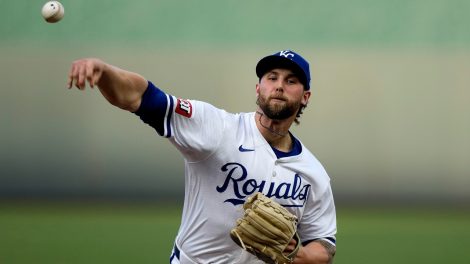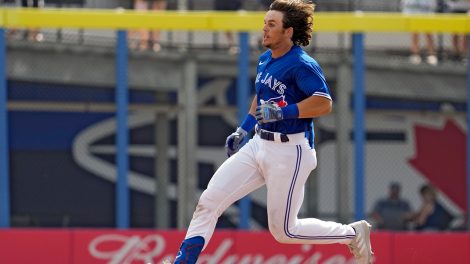LAKE BUENA VISTA, Fla. – Broadly speaking, the MLB Winter Meetings are off to a slow start. More specifically, the Toronto Blue Jays have yet to make a move.
In theory, the reported deals for Bryan Shaw (Rockies) and Tommy Hunter (Phillies) could accelerate the pace of action by providing clarity for the rest of the middle relievers seeking contracts.
“I bet this gets people off the sidelines,” said one agent.
“Teams that wait usually get a nice bargain bat, but arms always go fast,” added one club evaluator.
Still, the biggest free agents haven’t yet signed. Not Yu Darvish, Jake Arrieta, J.D. Martinez, Eric Hosmer, Mike Moustakas or anyone else within the Top 10 on MLB Trade Rumors’ annual free agent list.
One reason for the slowdown? Blue Jays GM Ross Atkins said Tuesday that teams are now more thorough in their discussions with one another. A decade ago, most of the interactions were GM to GM. Some assistant GMs might converge, but that was about it.
“Now, that’s just not the case,” Atkins said.
Instead, GMs delegate more. In the Toronto front office, assistant GMs Andrew Tinnish and Joe Sheehan lead some conversations with teams and agents. Former Red Sox GM Ben Cherington leads others. And beyond that group, others in the Toronto front office are expected to gather information and add it to the club’s internal database.
“It’s not just the 30 GMs in baseball,” Atkins said. “It’s the 30 times 30 people that are working in baseball operations.”
The Blue Jays’ current front office quite literally has ‘empower’ in its internal mission statement, so it’s no surprise that they’re comfortable asking those below the GM level to take the lead on negotiations, particularly when there’s a pre-existing relationship in place. Meetings with clubs and agents are “thoughtful and purposeful” rather than haphazard, Atkins said.
Around baseball, the Blue Jays aren’t alone. Ten years ago, it simply wouldn’t have been possible to gather information with such thoroughness. It wasn’t until quite recently that teams had 30 people in their baseball operations departments.
“That’s changed in the last two or three years,” Atkins said.
As such, trade talks are more detailed than before. Teams arrive at the winter meetings with internal assessments of rival players and prospects, so they don’t need to research on the fly. And teams rarely put ‘untouchable’ players completely off limits anymore, adding to the volume of trade talks. With 29 potential trade partners, there’s a lot of ground to cover.
“That’s probably what’s slowing down free agency is team discussions are robust,” Atkins said, adding that he could only speak on behalf of the Blue Jays.
Contrast these meetings to the last time the winter meetings took place here at Disney’s Swan and Dolphin Hotel. Back in 2013, the Diamondbacks were run by Kevin Towers, a man nicknamed the Gunslinger. Now they’re under the leadership of Mike Hazen, a more deliberate GM who learned alongside the likes of Mark Shapiro and Theo Epstein.
In a broad sense, clubs value players similarly. They might not all have the same scouting reports or use the same version of wins above replacement, but they can all speak the same language. Instead of lining up in value with a few organizations, most teams can now have productive discussions with just about anyone.
“It takes a lot of work, it takes a lot of interactions and it doesn’t happen overnight,” Atkins added. “It happens over weeks.”
As a longtime agent pointed out, the current crop of GMs is extremely bright. They’re also thorough, careful not to overlook any possibilities. Many of those discussions are quick — it’s not uncommon for teams to respond to potential trade talks within a matter of minutes — but combined, they take time.
So while these meetings can undoubtedly spark activity, face-to-face meetings can only nudge the off-season along so far. As long as teams remain this diligent, the off-season will look less like a sprint to the winter meetings and more like a marathon.
[relatedlinks]









